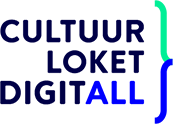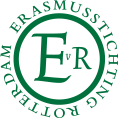Poet
C.B. Vaandrager

C.B. Vaandrager
(The Netherlands, 1935 - 1992)
Biography
Cornelis Bastiaan Vaandrager’s life and work are more intricately intertwined than one would think at first glance. From a literary historical perspective, he is first and foremost one of the ‘Zestigers’ (‘1960s-ers’), a poet who made readymades and applied advertising strategies to size down the pompous pretentions of poetry to a minimum, and, through that, offered an alternative for poems in which romantic values and personal images had the upper hand.
In his prose, he carelessly speaks of his youth (Leve Joop Massaker), his adolescence (De avonturen van Cornelis Bastiaan Vaandrager) and later life (De hef). In his poetry, it is the business-like, unpoetic tone that stands out. Gard Sivik contains many readymades, in which texts from advertisements are used, and the oftentimes ultra-short poems are presented with aplomb. This leads to a kind of clearcutting, such as in the ‘Gedichten om niet’ sequence:
What is a human life?
A human life is nothing
An entire page is reserved for this poem, which was enough reason for a critic to call Vaandrager ‘a paper-wasting fraud who sells many centuries worth of small-town Dutch turnips for lemons’. The readymade was often used as a means to create neutral art, without reality being romanticized by the poet. However, Vaandrager mostly used the readymade to shape his autobiography.
His most famous poems from the sixties were brought together in the collection Gedichten (1967), but this highlight in his literary career was published during a time in which Vaandrager himself was doing less well. The next collection appears only in 1973: Martin waar zijn de giraffe . . . The poems seem like word games, free associations to certain words.
Beak
Mug, mouth, snout.
Less applicable: face,
lip, nail, nose.
Slit, with which it must coo-coo,
Cock-a-doodle-jaw.
Maw.
But this game was played by schoolchildren that partook in research into children’s vocabulary; the collection is Vaandrager’s processing of the research findings. It was well-received, something that annoyed him: ‘I bet they’ll pin me down on those children’s poems now. That’s not what I want at all’ – his then-girlfriend, Hetty Smink, quotes.
Another two collections are published: Metalon (1987) and Sampleton (1990). They were less well-received – his literary historical significance had passed, and that both collections contained good, interesting poems was only noted with the appearance of Made in Rotterdam, Collected works in 2005.
Vaandrager was a poet who was present at the right moment, affiliated with the right journals, and fittingly presented himself in public. His works only contain a handful of poems that could stand as models for the minimalist renewal that the ‘Zestigers’ propagated, but they did have the desired effect: they annoyed critics, and turned the literary journals in which he published them into literary manifestos. His success in literary history is pre-eminently an illustration of how literature is temporally and contextually defined. A literary historical role is always the sum of body of works and behavior, and Vaandrager seemed to realize that all of it could be a stroke of luck.
© Bertram Mourits (Translated by Jonas van de Poel)
BibliographyPoetry
Gedichten, De Bezige Bij, Amsterdam, 1967
Martin, waarom hebbe de giraffe..., RKS, Rotterdam, 1973
Totale poëzie, De Bezige Bij, Amsterdam,1981
In staat van oproer. Rotturdamse gedigte, Bébert, Rotterdam, 1987.
Metalon, De Bezige Bij, Amsterdam, 1987
Sampleton, De Bezige Bij, Amsterdam,1990
Made in Rotterdam, verzamelde gedichten, De Bezige Bij, Amsterdam, 2008
Prose
Leve Joop Massaker, 1960
Met andere ogen, 1961
De avonturen van Cornelis Bastiaan Vaandrager I, 1963
De reus van Rotterdam, 1971
De hef, 1975
Poems
Poems of C.B. Vaandrager
Sponsors
























